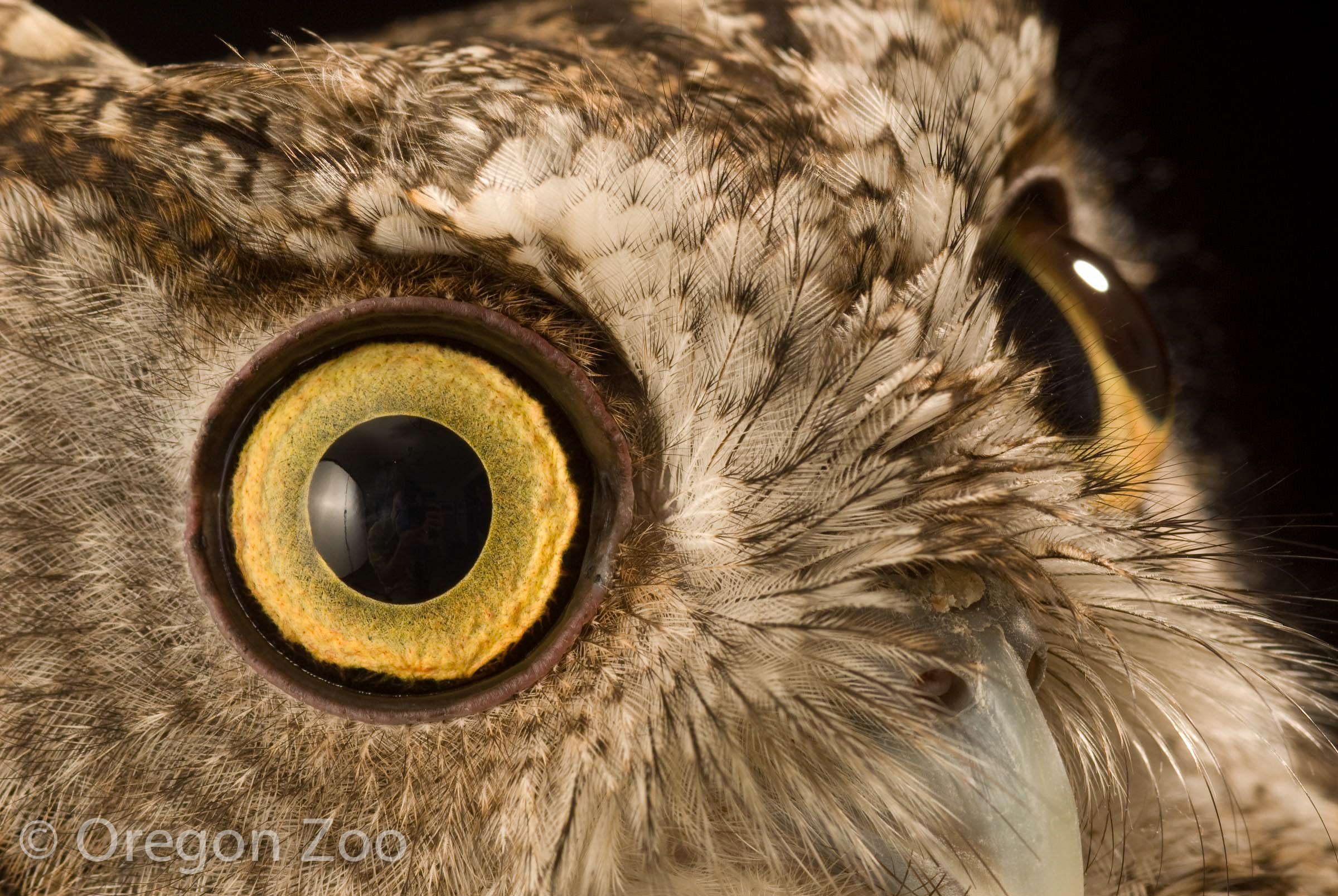Form and Function
Ear-Tufts
M. kennicottii has developed feathers that form horn-like structures above their eyes. This is a deceptive adaptations because one would believe that these “ear-tufts” would be where the ears are located when in reality, their actual ears are located directly on the sides of their heads (Harrison 2004). Their ear holes are asymmetrical meaning that one ear hole is located higher on the head than the other one and they are pointed either slightly upward or slightly downward (Weidensaul 1997). This is why owls are known for having an outstanding sense of hearing. This asymmetry allows for the owl to hear sound frequencies coming from many different directions, giving the M. kennicottii a keen sense of hearing to be able to detect exact locations of their prey (Harrison 2004).
The M. kennicottii has very large, beautiful yellow eyes. Not only are these eyes aesthetically pleasing, they also serve an important function for the owl. To understand why it is beneficial for owls to have large eyes, it is important to first understand some basic physiology of the eye. Eyes contain two different kinds of photoreceptors: cones which allow to perceive colors and rods which do not perceive color, but perceive shades of gray and allow to see images in the dark. M. kennicottii has large eyes that are full of rods that are active in low light or night time settings (Weidensaul 1997). M. kennicottii, like many other owls, is nocturnal and when it preys on food during the night. It would make sense the the owl has large, sensitive-to-light eyes which help make the bird such a fine predator.
Color Camouflage
M. kennicottii can vary between either a gray or a brown color with white and black streaks (BirdWeb). These color combinations are common for other owls as well because it enables the owls to blend into bark, making it harder for predators to find. To see how the western-screech owl can be concealed in a tree, click on this link.
Flying Silently
M. kennicottii does not make sound when it flies. Silent flight is a trait that is also shared with other owls, but not necessarily other birds. Location and composition of specific feathers on the wing are the cause for this amazing characteristic. There is a layer of rigid feathers located on the leading edge of the wing that serve to cut through and funnel the air. Next, the air hits the layer of downy-like feathers on the body of the wing and it serves to absorb and mute sound waves. Lastly, there is a layer of feathers on the back edge of the wing that is kind of like a muffler on a car by reducing sound waves that are going out the back of the wing (Chen et al. 2012). Interesting enough, researches are interested in the aerodynamics of owl feathers so that eventually they can apply similar ideas to make jet planes or wind turbines quieter (Chen et al. 2012). And people wonder why we study animals…
Read this article in Scientific America to learn more information about owl wing research and quieter airplanes.
Go back to the homepage or continue to read about the life history of the Western Screech Owl.
.jpg)
